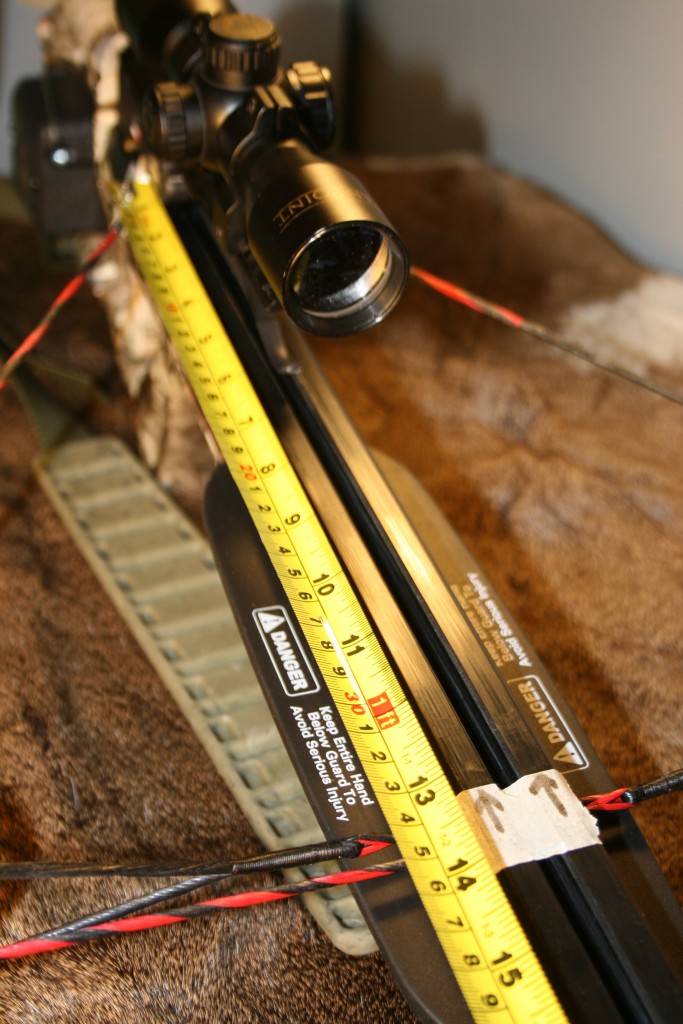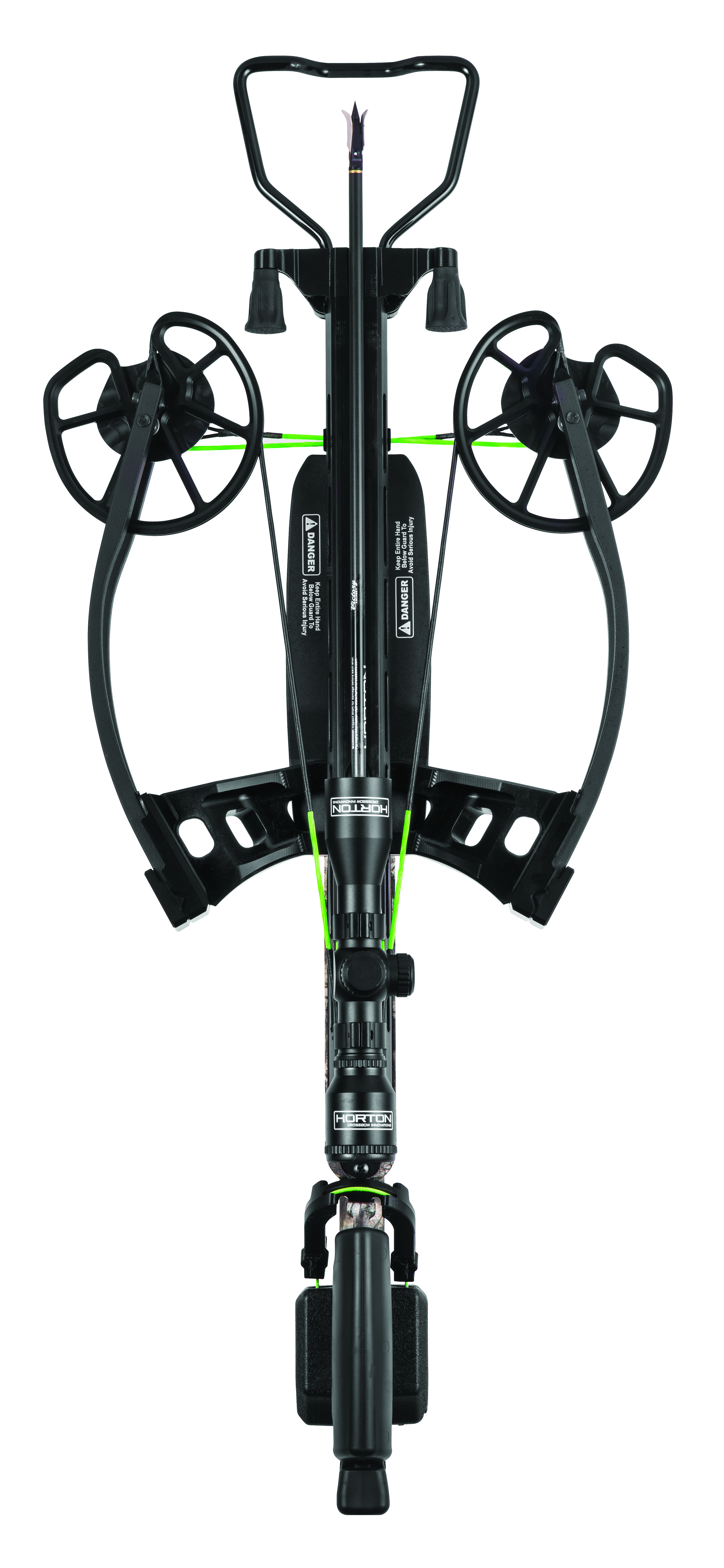
Conventional- and reverse-draw crossbows differ in more than just appearance. Here’s what you need to know to become an informed crossbow consumer.
Among the first considerations made when selecting a crossbow involves its draw design. That is, whether to choose one with a conventional or reverse draw. Both types of crossbow have design-specific advantages; otherwise one would falter in the marketplace. What are those pluses? Read on.
By Aaron Carter
Constituting the core of the horizontal bow market, conventional-draw crossbows are those models on which the bow’s riser is secured to the end of the barrel and the string is drawn like that of a compound- or traditional-style vertical bow. Reverse draw crossbows, on the other hand, have the bow’s riser attached beneath the barrel near the trigger and, true to its name, are draw in a direction reverse of its counterpart. This dissimilarity is important because it affects the performance, dimensions, and balance of the crossbow.
Performance & Dimensions
Power stroke, which is measured from the string in its cocked position to its uncocked, at-rest point—along with limb and cam design and draw weight, among other things—is a key contributor to a crossbow’s velocity. In general, the longer the power stroke the higher the velocity. It’s here that reverse-draw crossbows have a distinct edge.

Why? Because the riser, which is positioned near the shooter, is reversed, the string’s at-rest point is near the front end of the barrel, thereby providing additional length for the power stroke without increasing the crossbow’s overall length. On most conventional-draw crossbows, the string stops a considerable distance shy of the barrel’s end. That’s lost power potential that must be accounted for elsewhere.
To increase the power stroke of a conventional-draw crossbow (even with a bullpup-style design) requires lengthening the barrel, which contributes to a nose-heavy feeling and reduces maneuverability in tight quarters.
To illustrate these concepts, let’s compare TenPoint’s Stealth FX4 crossbow with Horton’s Storm RDX crossbow, which are representative of conventional- and reverse-draw crossbows, respectively. Measuring 34.4 inches (FX4) and 35.5 inches (RDX), the crossbows are similar in length; however, because of its reverse-draw design, the Storm RDX’s power stroke is 16.5 inches in length, as opposed to the Stealth FX4’s 13.4 inches. Does this make a significant difference? Absolutely! Both crossbows achieve 370 f.p.s., though the RDX does so with a 400-grain bolt as opposed to the FX4’s 370-grain projectile. That provides for an increase of 9 foot-pounds of kinetic energy (122 vs. 113), too.
If that weren’t enough, the RDX accomplishes this with a 165-pound draw weight—20 pounds less than that of the FX4. In general, reverse-draw crossbows have lower draw weights than their conventional counterparts but not at the detriment of speed. Remember, though, that cam and limb design are also contributing to the RDX’s high velocity and low poundage—not just power stroke. It’s several interrelated and interdependent features working in concert.
Concerning limb design, reverse-draw crossbows have parallel limbs that not only enhance performance, but also reduce axel-to-axel (ATA) length, which is an important consideration in the confines of a heavily tapered ground blind with a small footprint or a tree stand. On the Storm RDX, the at-rest ATA width is 15.5 inches, while the cocked ATA is 10 inches. The Stealth FX4’s uncocked and cocked widths are 2.1 and 3.3 inches greater, respectively. In tight quarters, that’s a real difference. But, expect the reverse-draw model to weigh more; in this case, the Storm RDX weighs 8.2 pounds while its conventional counterpart is 6.8 pounds. The cumulative effect of that seemingly insignificant difference in weight adds up in fatigue over time and distance, as well as when supporting the crossbow.
Balance
Conventional- and reverse-draw crossbows oftentimes share similar lengths, but their points of balance are wholly dissimilar. The reason lies in their weight distribution.

Though lighter, on a conventional-draw model the riser is affixed to the forward most point of the barrel, moving the center of balance forward and giving the crossbow a front-heavy feel. It’s akin to a rifle or shotgun with a couple pound weight added to the muzzle.
On the other hand, a reverse-draw crossbow has the riser positioned near the shooter’s body, for better balance and maneuvering. While the latter design would give an edge for freehanded shooting, they are equally effective in the field. Both should be handled to see what feels best for you. Only after handling them side-by-side can you make an informed decision.
Price
Conventional-draw crossbows dominate the marketplace. For this reason, they more readily available in a diverse range of prices; high-quality, entry-level models, such as the Wicked Ridge Warrior G3 package, sell for $469, while the top-end TenPoint Venom Xtra crossbow is priced at $2,519. Thus, there’s an option to fit every budget. Such isn’t the case for reverse-draw crossbows, which are priced at about double the cost of an entry-level conventional-draw crossbow, or in line with a mid-priced model.
Conventional- and reverse-draw crossbows each have advantages due to their unique designs, but there are tradeoffs, too. Hopefully this article highlighted the plusses of each type so that, after handling them, you’ll be better prepared to make a decision about which will accompany you afield this fall.
— PAID PARTNER CONTENT. This content is brought to you by a D&DH advertising sponsor.

